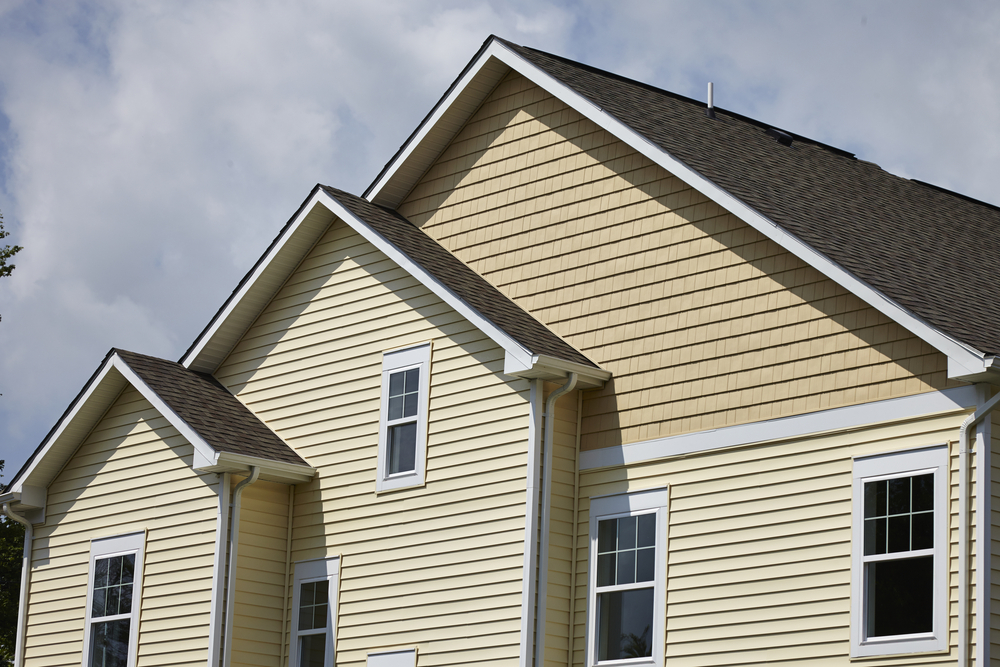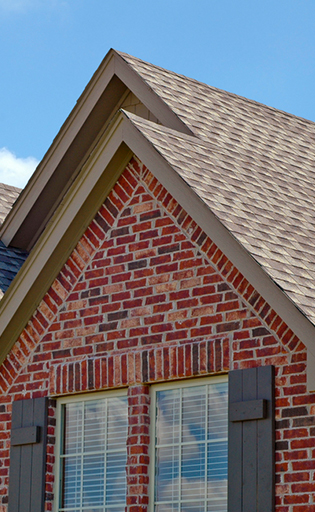Everything You Should Know About the Types of Siding Profiles and Textures

There are a wide variety of different siding profiles and textures to choose from. If you’re replacing the siding on your home, it’s important to thoroughly explore your options ahead of time so you make the right choice for your home. Siding’s primary role is to protect your home from weather, but it also plays a major role in the design of your home and its curb appeal. You’ll want to consider the overall design of your home as well as whether you want your home to fit in with the others in your neighborhood or stand out.
The following are types of siding profiles and textures for you to consider for your home.
Horizontal Siding
Horizontal siding is one of the most popular siding choices. In fact, when you think of siding, what you picture in your mind may be horizontal siding. There are different types of horizontal siding to choose from.
Clapboard Siding

Clapboard siding is horizontal siding that has overlapping joints and beveled edges. It also has the appearance of authentic wood.
Dutch Lap Siding

Dutch lap is a type of horizontal siding with no overlapping due to a recessed curve that is at the top of each row of the siding. Dutch lap is popular because it brings an old world charm to homes.
Beaded Siding

Beaded siding is horizontal siding with a sculpted beaded ridge between siding panels. This type of siding can bring Colonial-era charm to your home.
Vertical Siding

Vertical siding is also a popular siding choice. Vertical siding is board and batten siding, with vertical boards and a batten strip, which is a narrower board that sits in between the wider boards, that projects above the surface of the board. Vertical siding has stayed faithful to its original design from centuries ago, bringing a historical charm to your home.
Shake and Scallop Siding
Shakes and scallops are typically made from vinyl that go on the sides of your house. They’re typically uneven-looking and have rough edges, which gives them the appearance of real wood.
Traditional Shake Siding

Traditional shake siding has shingles that are 7” in size. The texture is deep cedar grain, which gives them an authentic hand-cut wood appearance.
Hand-Split Shake Siding

Hand-split shakes offer homes a rustic appearance. The shingles have a random texture to them and are rough-cut, so they appear to be hand-cut wood shingles.
Cape Cod Shingle Siding

Cape Cod shingles are more clean-cut in appearance than other types of shake siding. They still have a natural cedar grain to them, giving the appearance of real wood, but with cleaner lines.
Scallop Siding

Scallop siding also carries the appearance of authentic wood. The shingles are more uniform than in shake siding, however, and have curved scallops at the bottom of each shingle.
Soffit Siding
Soffit is siding that goes on the underside of a roof overhang, such as on the bottom of eaves. Soffit isn’t the most visible siding on your home, but it plays an important role. Soffit can be solid, insulated, or vented depending on your needs.
Solid Soffit Siding

Solid soffit siding is made of solid siding planks. It’s designed to protect the underside of roof overhangs and doesn’t require a lot of maintenance. Solid soffit siding doesn’t offer either ventilation or insulation.
Vented Soffit Siding

Vented soffits are a good way to provide ventilation for the rafters and eaves on your home.
Insulated Soffit Siding

Insulated siding can help to lower your heating and cooling bills by helping to keep warm and cool air from escaping your home. By keeping warm or cool air inside your home, insulated siding helps HVAC systems to not have to work as hard to heat or cool your house, lowering your energy bills.
Need New Siding on Your Home?
Contact us for a free, no-obligation siding replacement quote.

